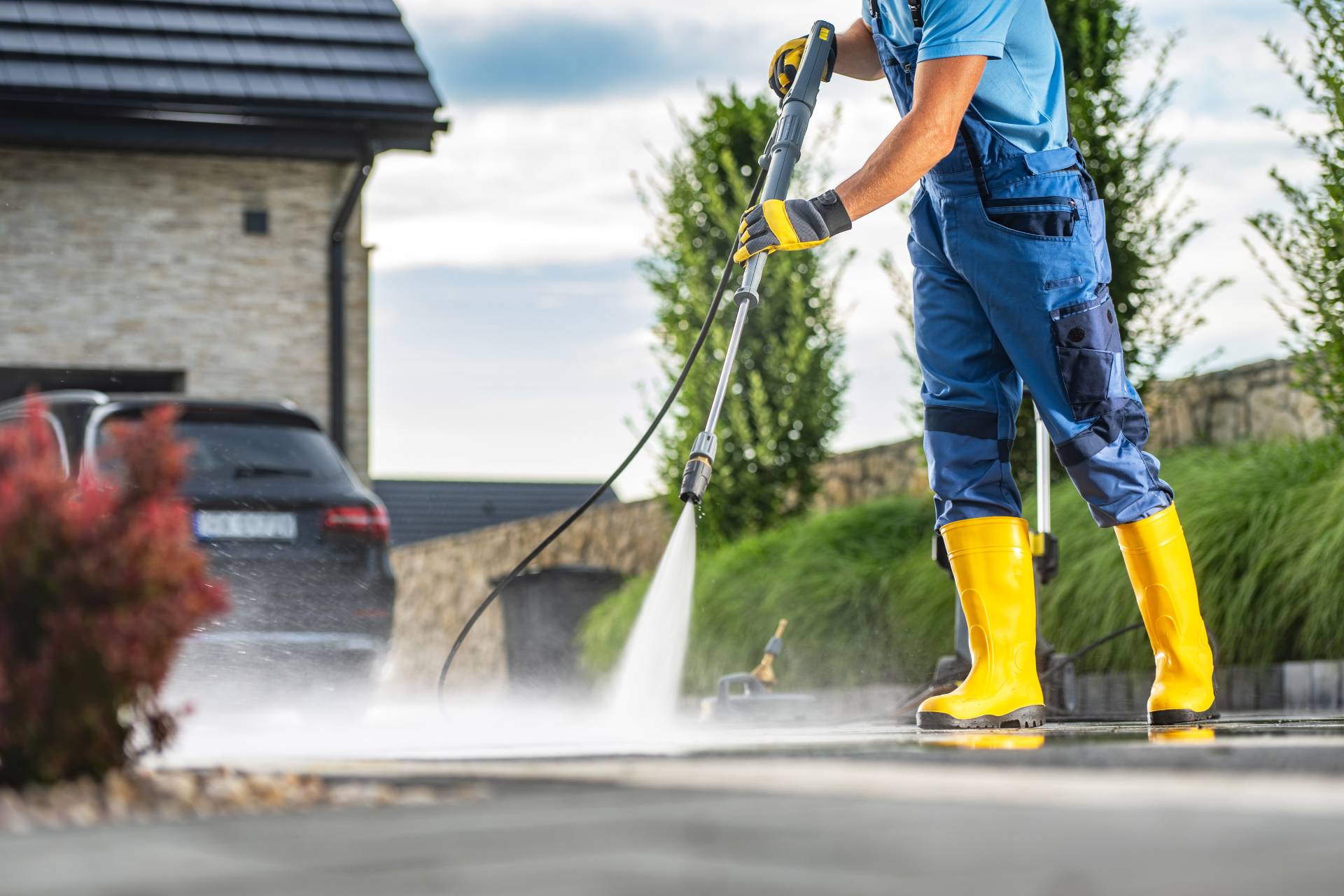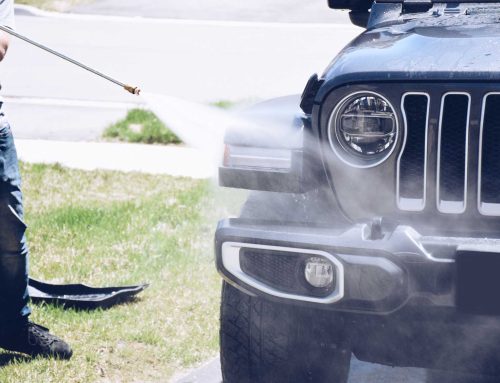A well-designed and well-maintained driveway that complements the overall aesthetic of a home can significantly enhance a property’s curb appeal. It can also create a more pleasant outdoor environment and can make spending time in your driveway or front yard more enjoyable. However, driveways are susceptible to stains from vehicle fluids, oil leaks, leaves, and other substances. An old and worn-out driveway can significantly detract from the overall appearance of your home.
Using a high-pressure stream of water to remove dirt, grime, mold, mildew, and other debris from the surface, power washing is an effective method for reviving an old driveway. Here are some ways power washing can contribute to a fresh look for your driveway:
Dirt and Stain Removal
Over time, the accumulation of dirt and grime can make a driveway look aged, worn, and unattractive. Dirt and stains, especially oil and grease, rust stains, and tire marks, can contribute to surface deterioration. Prompt removal of these stains and substances can help prevent them from becoming deeply ingrained and more difficult to eliminate. Power washing is effective in removing various types of stains, including oil, grease, tire marks, and rust. The force of the water helps break the bond between the stains and the driveway surface, facilitating their removal. Its deep cleaning action can penetrate the pores and textures of the driveway material. This is particularly important for surfaces like concrete and asphalt, where dirt and stains can settle into the porous structure. Removing dirt and stains improves the overall visual impression of the property, creating a positive impact on passersby and visitors.
Mold and Mildew Removal
Driveways in shaded or damp areas are susceptible to the growth of mold and mildew. This can result in unsightly stains and discoloration and can contribute to the degradation of driveway surfaces. Mold and mildew can penetrate porous materials like concrete, leading to structural damage over time. Removing mold and mildew helps protect the integrity of the driveway material. Furthermore, mold and mildew can create slippery surfaces, which pose safety hazards for pedestrians and vehicles using the driveway. Removal of mold and mildew helps improve traction, reducing the risk of slips and falls. With power washing, you can reach areas where mold and mildew may have taken root. Power washing provides a thorough and uniform cleaning of the driveway surface. The high-pressure water stream can reach into cracks, crevices, and textured surfaces where mold and mildew may be hiding, ensuring a comprehensive removal. By eliminating the spores and the organic matter on which these organisms thrive, power washing inhibits the ability of mold and mildew to return quickly.
Surface Preparation
Preparing surfaces is a crucial step in rejuvenating an old driveway. Surface preparation involves removing contaminants, such as dirt, grime, oil, mold, mildew, and stains, to reveal the true condition of the driveway and create a clean foundation for rejuvenation. It enables a close inspection of the driveway, allowing you to identify cracks, potholes, or other structural issues. Addressing these problems during the revival process helps prevent further deterioration and enhances the longevity of the driveway. If you are planning to apply sealants, coatings, stains, or other treatments, proper surface preparation is essential for ensuring good adhesion. A clean surface allows treatments to bond effectively, maximizing their durability and effectiveness. Driveways are often expansive surfaces, and power washing allows for efficient and thorough cleaning of large areas. The high-pressure water stream can cover a significant area, making power washing a time-effective method for surface preparation.
Preventing Weed and Moss Growth
Weeds and moss not only detract from the visual appeal of the driveway but can also cause structural and safety issues. Weeds and moss can create unsightly patches on the driveway, diminishing its appearance. Preventing their growth is crucial for restoring and maintaining the appearance of the driveway. Weeds, especially those with deep roots, can penetrate cracks and joints in the driveway’s surface. As these plants grow, they can exert pressure on the driveway material, potentially causing further damage, including the widening of cracks or fractures. Power washing is one method that can help prevent weed and moss growth. Power washing is effective in reaching into cracks, crevices, and porous surfaces where weed seeds and moss spores may be hiding. The forceful water stream can dislodge these particles, preventing them from establishing roots. Combining power washing with other preventive strategies, such as applying herbicides, using physical barriers, or improving drainage to reduce moisture retention, contributes to a comprehensive approach to maintaining a weed- and moss-free driveway.
Restoring Texture
The texture of a driveway can impact its appearance, functionality, and safety. Over time, driveways can develop a rough or uneven texture due to the accumulation of dirt, grime, and other contaminants. Uneven textures can create an unattractive and disjointed appearance. Furthermore, driveways with rough textures can trap dirt, debris, and organic matter in crevices and pores. This can lead to the accumulation of stains and contribute to the growth of weeds, moss, or mold. Restoring a smoother texture helps minimize these straps and makes the surface easier to clean and maintain. It also contributes to a smoother and more cohesive surface, enhancing the overall look of the driveway. Power washing’s deep cleaning action removes particles that may have settled into the surface, which contribute to an uneven texture. Power washing can help restore the original texture of your driveway and make it look smoother and more aesthetically pleasing.
Enhancing Safety
Driveways are often shared spaces where pedestrians and vehicles coexist. Enhancing safety is an important aspect of reviving an old driveway. Driveways, especially those exposed to the elements, can become slippery due to the accumulation of dirt, moss, algae, and other contaminants. Uneven surfaces, cracks, or raised edges on a driveway can create trip hazards for pedestrians. Driveway restoration efforts should involves measures to prevent trips, slips, and falls, which can lead to injuries. A driveway’s surface condition can also impact vehicle traction, especially during wet or icy conditions. A slippery or uneven surface may pose challenges for vehicles, increasing the risk of accidents and loss of control. Stains on the driveway surface can sometimes be indicators of oil or other substances that create slippery spots. Power washing removes slippery elements, improving traction and overall safety for pedestrians and vehicles and contributing to a more visually appealing driveway. Moreover, power washing provides a clean slate for identifying and addressing surface issues that may contribute to safety hazards, such as cracks, uneven surfaces, or raised edges. This step is crucial for planning necessary repairs or improvements.
Reviving an old driveway can be a practical and beneficial investment. It improves the driveway’s visual appeal, contributing to the overall aesthetics of your home’s exterior and potentially raising its market value. Rejuvenating your old driveway preserves the structural integrity of the driveway but also reduces the need for more extensive and costly repairs in the future. A well-maintained driveway contributes to a safer environment for both pedestrians and vehicles, reducing the risk of accidents or injuries.
By effectively removing contaminants, power washing provides a clean and well-prepared driveway surface and helps make subsequent maintenance efforts more successful. Reviving an old driveway with power washing is a cost-effective and efficient way to enhance its visual appeal, prepare the surface for additional treatments, and prevent potential structural damage. Once you’ve revived your old driveway, you may also consider using power washing as part of regular driveway maintenance. By doing so, you can extend the life of the driveway surface and contribute to a safer and more appealing outdoor space for your home.



